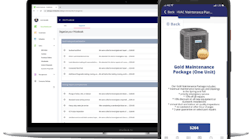Q. Dave, in the last couple of years, I have grown increasingly frustrated. Why won't people respond to my emails, return my voice mails, or even see me when I show up in person? Am I doing something wrong?
A. You have asked a question that tens of thousands of other sales people have bouncing around in their heads every day. I hope the response which follows will be helpful.
First, I can empathize with you. You are frustrated that people who should be interested in what you have to offer don't respond to your emails, don't return your calls, and are hesitant to spend time with you. I can tell you from my personal experience, and conversations with lots of sales people, that you are not alone. The condition you are describing is shared by hundreds of thousands of sales people.
What's going on? First, I don't think it's you. It's not that they are responding to other sales people's emails and just don't respond to yours because they don't like you. While that may be the case, (I have no way of knowing) I suspect that it is not. I hear similar stories, and experience it myself, far too often to think that the problem is you. It's not you. It's them.
The reality is that things have changed dramatically in the past few years, and will continue to change just as dramatically in the next few years. Your customers have too much to do, and not enough time in which to do it. They are being asked to do more, in less time and with fewer resources than ever before. Blame it on the recession and the relentless development of technology.
That “too much” label applies to almost everything. They get too many emails to thoughtfully reply to all but a handful. They get too many voice mail messages to take the time to reply to anyone that isn’t directly related to a project at the top of their list. They just don’t have the time anymore.
They need to be productive, to get today’s project done, knowing that there are dozens of others vying for priority just behind it. So, your emails and phone messages get pushed down the list in favor of something that is top of the mind today.
So, what do you do about it?
Here are some suggestions. First, let’s think in terms of two classes of people: Prospects, who have never bought from you, but could; and Customers, who have purchased in the past and know you.
For prospects…
1. Be visible in the media that they use to do preliminary research on their options. A few years ago, most customers would maintain a base of sales people or companies that they knew provided a certain class of solution. They would see those sales people in order to have some knowledge so that they could make an informed decision when they needed to. They would allow you the time to identify some issues in their operations or businesses and propose some solutions.
Today, many of them have replaced that process with searching the web and social media sites to identify the list of players to whom they want to talk, when they want to talk to them. It takes five minutes to skim a website, as opposed to 45 minutes to visit with you. It’s not that they will necessarily make a buying decision through these media (although if the risk is relatively low, they may); it’s that they do their preliminary research there. If you’re not visible in the spaces they choose, you won’t be in the game.
So, do some research. Find out where they go to make contacts, and put some time and effort in being there. It certainly should be an attractive, informative website, and it could be certain LinkedIn groups, or Facebook, or even Google Plus. By the way, in addition to on-line spaces, trade shows continue to be a place where buyers go to find sellers and solutions. As a seller, they can be a great place to find buyers. This will increase your chances of receiving a call and an invitation to visit when they have a timely issue.
2. Do a better job of refining, prioritizing and qualifying your prospects before you attempt to reach them. A few years ago, you may have had a list of 200 “prospects.” Today, you will be more effective having researched, qualified and refined that list to a high-potential list of 20.
With a smaller, much more highly refined list, your mindset changes. Instead of thinking “I'll make 30 outbound calls today and see if I can get an appointment or two,” you think, “I've got 10 people I need to get to see. How can I do that?” Your thinking, and therefore the actions that follow that, become less “quantity” and more “quality;” less tactical and more strategic.
Now, let’s talk about customers…
3. Change your mindset when it comes to phone calls, emails and live visits with your customers. Be cognizant of the value the customer receives from your visit with him/her. You cannot just “stop in.” You cannot expect to take your customer’s time, unless you can reasonably expect him /her to get something of value from the time he/she spends with you. So, before you make a phone call, send an email and place a live sales call, answer this question, in as detailed a way as possible, “What value will the customer get from the time he/she spends with this email/phone call/visit?”
This is a long-term strategy. As you consistently adhere to it, you will gain a reputation with your customers. As that reputation grows, you will find they will be more likely to meet with you.
When I was selling, I developed a rule which I have tried to stick to ever since. If I did not have something that I thought the customer would likely think was of value to him/her, I would not attempt to see him. I wouldn’t see him for the sake of seeing him. Over time, my customers grew to know that about me. Then, whenever I called for an appointment, they were much more likely to meet with me, because they knew that they would likely walk away with something of value.
In the short term, try to do some of what you would do in a live visit in other media. For example, email and use webinars to deliver information that you would previously have done in person. Don’t limit your thinking of webinars as large group presentations. You can do a webinar product presentation privately for just one person. We do a couple of those every week. Use some of these electronic media to save time for both you and your customer.
Unfortunately there is no simple, easy answer to this question. You are going to have to challenge yourself to learn, change and constantly adjust, with no guaranteed solutions in sight. This is why they hired you. If sales were easy, they would have a computer doing it.
Dave Kahle is one of the leading sales educators. He's written nine books, presented in 47 states and eight countries, and has helped enrich tens of thousands of sales people and transform hundreds of sales organizations.





